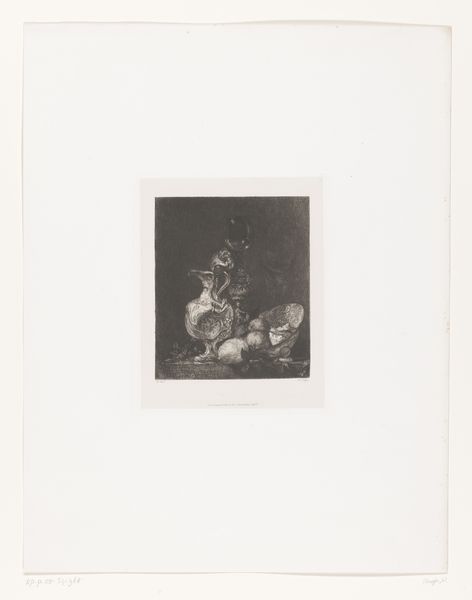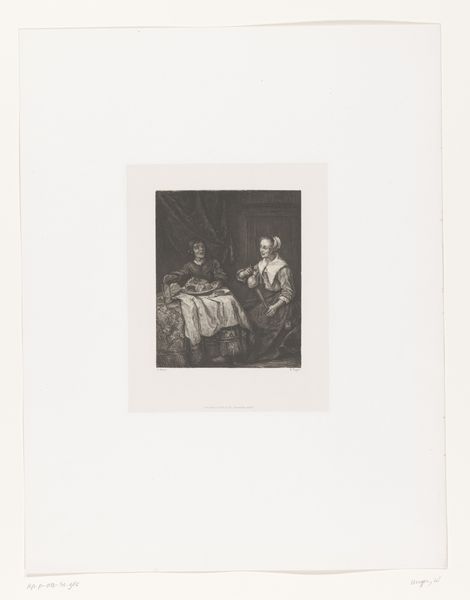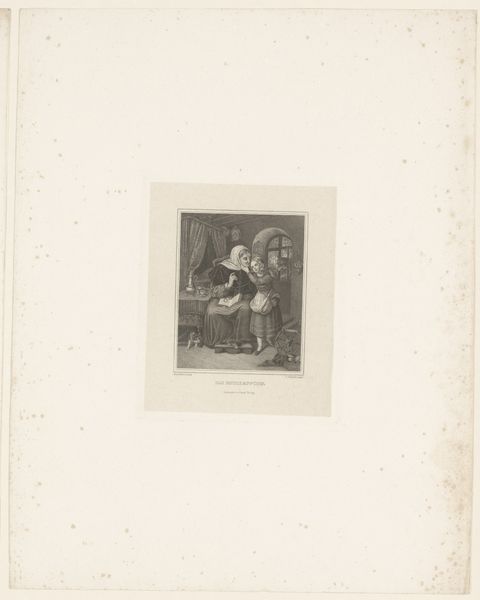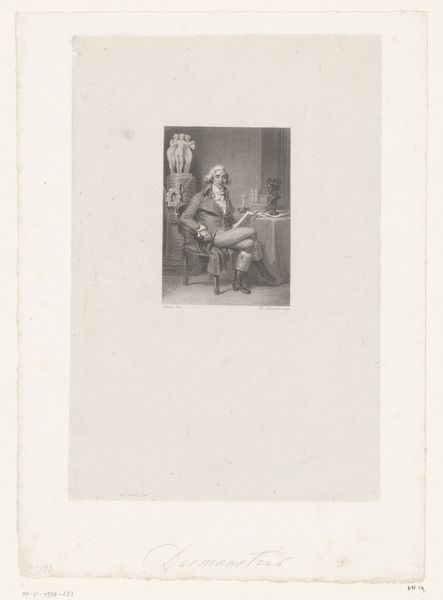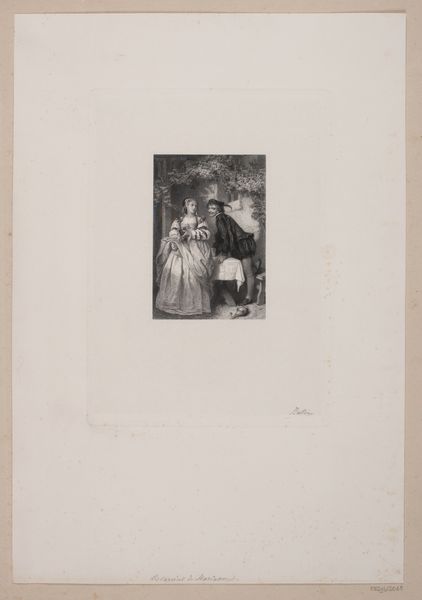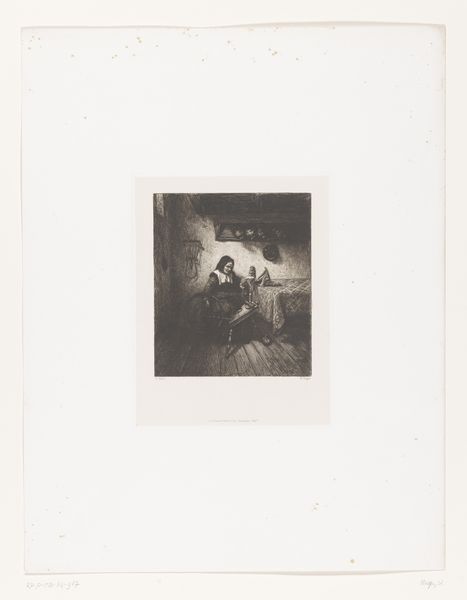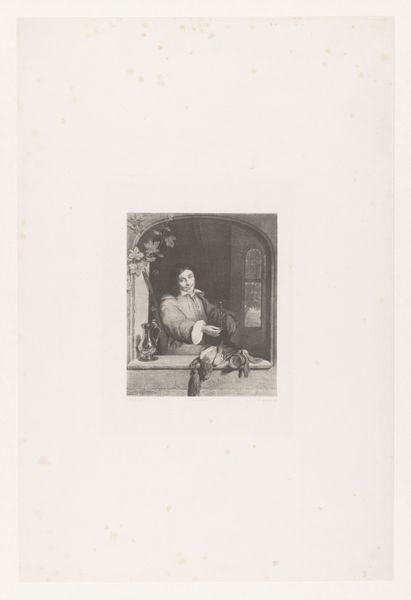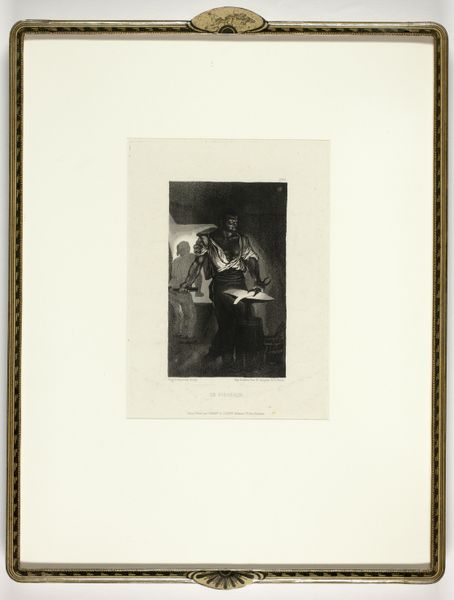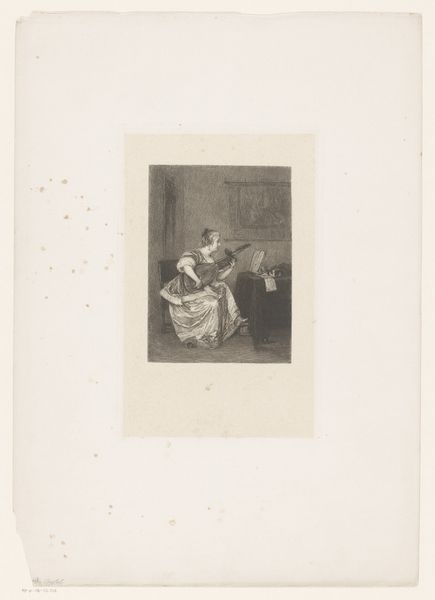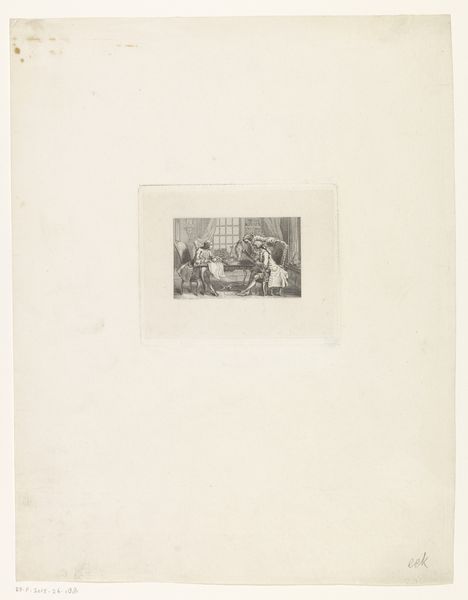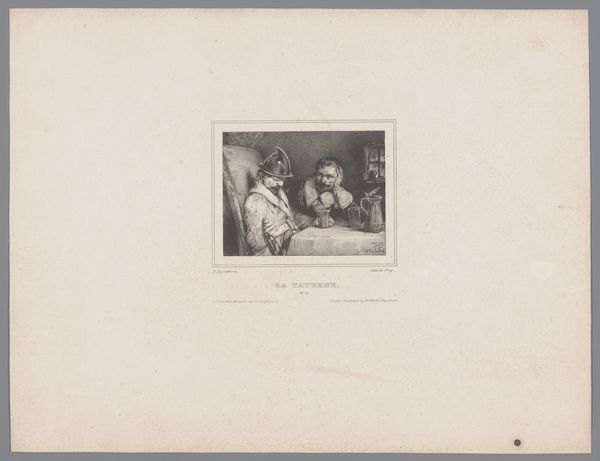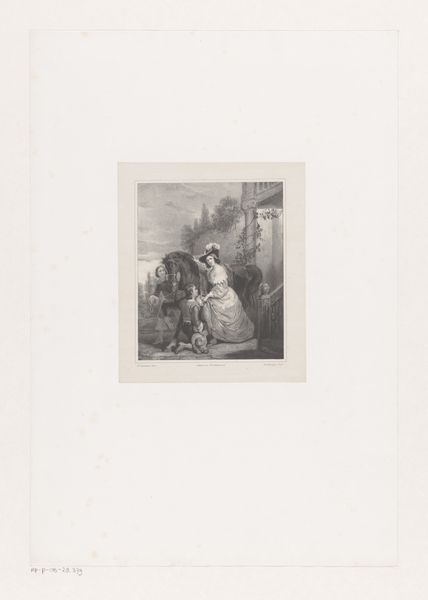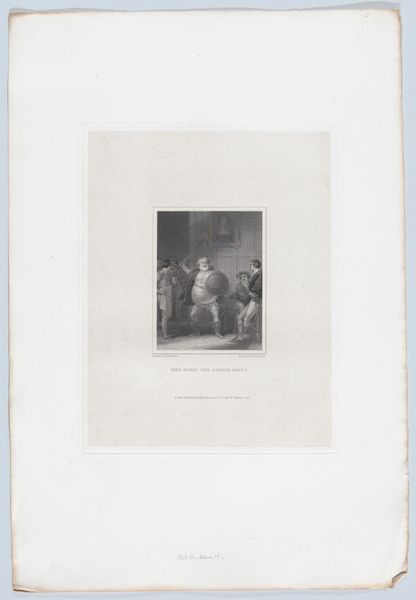
drawing, print, etching, paper, engraving
#
drawing
# print
#
etching
#
paper
#
genre-painting
#
engraving
#
realism
Dimensions: height 291 mm, width 228 mm
Copyright: Rijks Museum: Open Domain
Editor: Here we have "Schildersatelier," which translates to "Painter's Studio," an etching and engraving by William Unger created sometime between 1847 and 1889. The scene is quite dark, almost claustrophobic, but intensely focused on the creative process itself. What historical context might illuminate this portrayal of the artist’s space? Curator: It's intriguing to consider this image within the rise of Realism and its socio-political implications. Unger, by depicting a seemingly unglamorous workspace, participates in a broader movement to portray everyday life, moving away from idealized historical or mythological subjects. But is this simply a neutral observation? Editor: Good question! Perhaps it’s subtly challenging the romanticized view of artistic genius. By showing a cramped, possibly messy studio, is Unger commenting on the labor involved in art-making? Curator: Precisely. Think about the social position of artists during this period. Etchings and engravings made art more accessible. Does Unger's choice of printmaking techniques reinforce this democratic ideal, challenging the elite status traditionally associated with painting? How might its circulation via print impact perceptions of art and artists? Editor: That's a great point. Printmaking allowed for wider distribution, making art more public and, potentially, influencing social consciousness. Was there a rise in artistic communities at this time, and would Unger's work celebrate such an artistic identity? Curator: Certainly! The mid-to-late 19th century saw the emergence of artist colonies and a growing sense of artistic community. Consider the Barbizon School, for example. How does Unger's representation either align with or diverge from the communal ideals of such movements? Do you think this studio represents solitude or connection? Editor: It feels solitary, almost secretive. Perhaps this emphasizes the individual struggle for artistic expression, even amidst a burgeoning art scene. This really has made me think about how the social and political landscape is forever interlinked with the visual arts, even with a seemingly simple etching of a painter’s atelier. Curator: Exactly, it goes beyond just documenting an environment; it’s commenting on art’s place and artists’ roles in society.
Comments
No comments
Be the first to comment and join the conversation on the ultimate creative platform.
